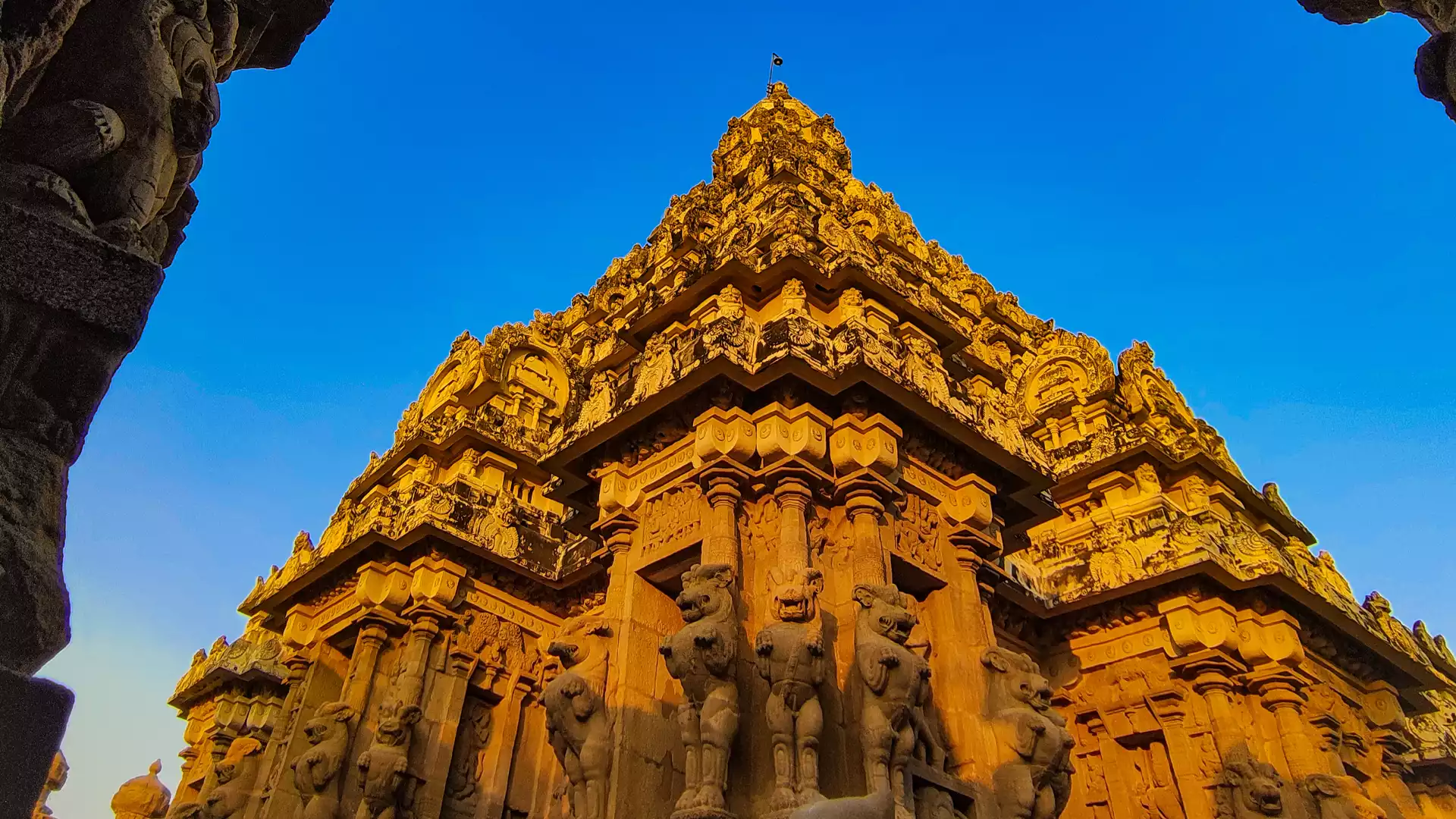
More than 70% of the 163 notified areas (megalithic sites) in Tamil Nadu are in Kancheepuram district. They are at Erumaiyur, Nandampakkam, Sirukalathur, Sikarayapuram, Ayyancheri, Kilambakkam and Nanmangalam.
Kancheepuram district is situated in the North-Eastern part of Tamil Nadu. It is bounded by Chengalpattu district in the East, Chennai district in the northeast, Ranipet and Tiruvannamalai districts in the west and Thiruvallur district in the north.
One of India’s seven scared cities, Kanchipuram was the capital of Pallavas. It later became the citadel of the Cholas, Vijayanagar Kings, the Muslims and the British. We can see a multitude of magnificent temples of unique architectural beauty bearing a rich testimony to its glorious Dravidian heritage. Varadharaja Perumal Temple, Ekambaranantha Temple, Kamakshi Amman Temple, Kumara Kottam, Kachapeshwarar Temple and Kailasananthar Temple are some of the noted ones.
The region is a well-known centre of the finest silk sarees made in the country. The silk sarees are woven manually and this industry is a livelihood for more than 5,000 families. From the 16th century, silk weavers here have used high-quality mulberry silk from neighbouring Karnataka state. Pure gold thread is woven in beautiful colours and patterns on their handlooms.
The region was a centre of learning, culture and philosophy. Sankaracharya and the Buddhist monk Bodhidharma lived and worked here.
Kanchipuram is very well-connected by roadways from Chennai, Madurai and Coimbatore.
Kancheepuram Bus Stand has services to all these major cities on a regular basis.
Chennai International Airport, Meenambakkam, is about 62 km away.
Kancheepuram Railway Station, Kancheepuram.
Puratchi Thalaivar Dr. M.G. Ramachandran Central Railway Station (Chennai Central), is about 75 km away.
October to February is the best time to visit Kancheepuram. The destination has a tropical climate with hot and humid summers. Usually, during July and August, it experiences heavy rainfall.